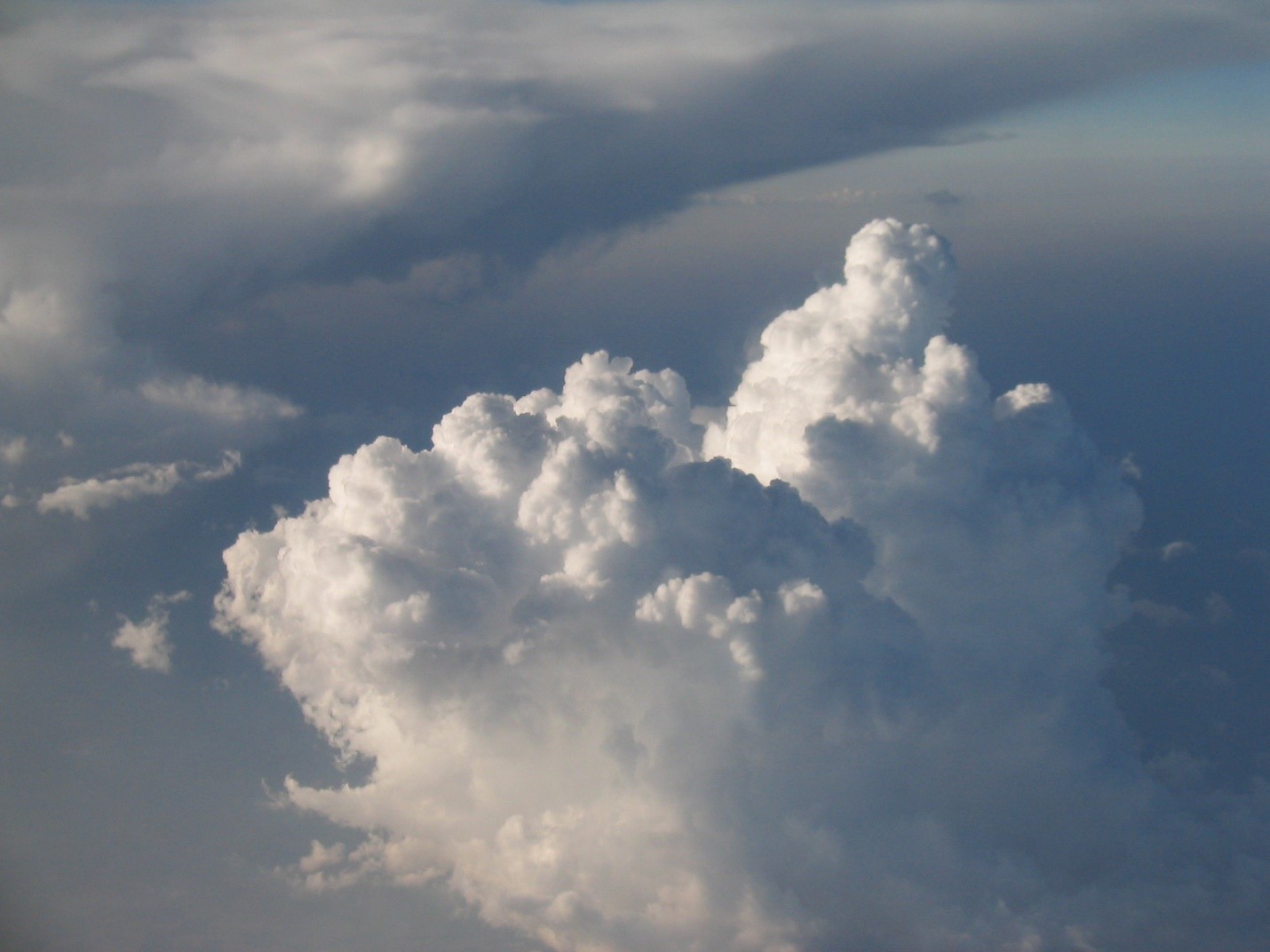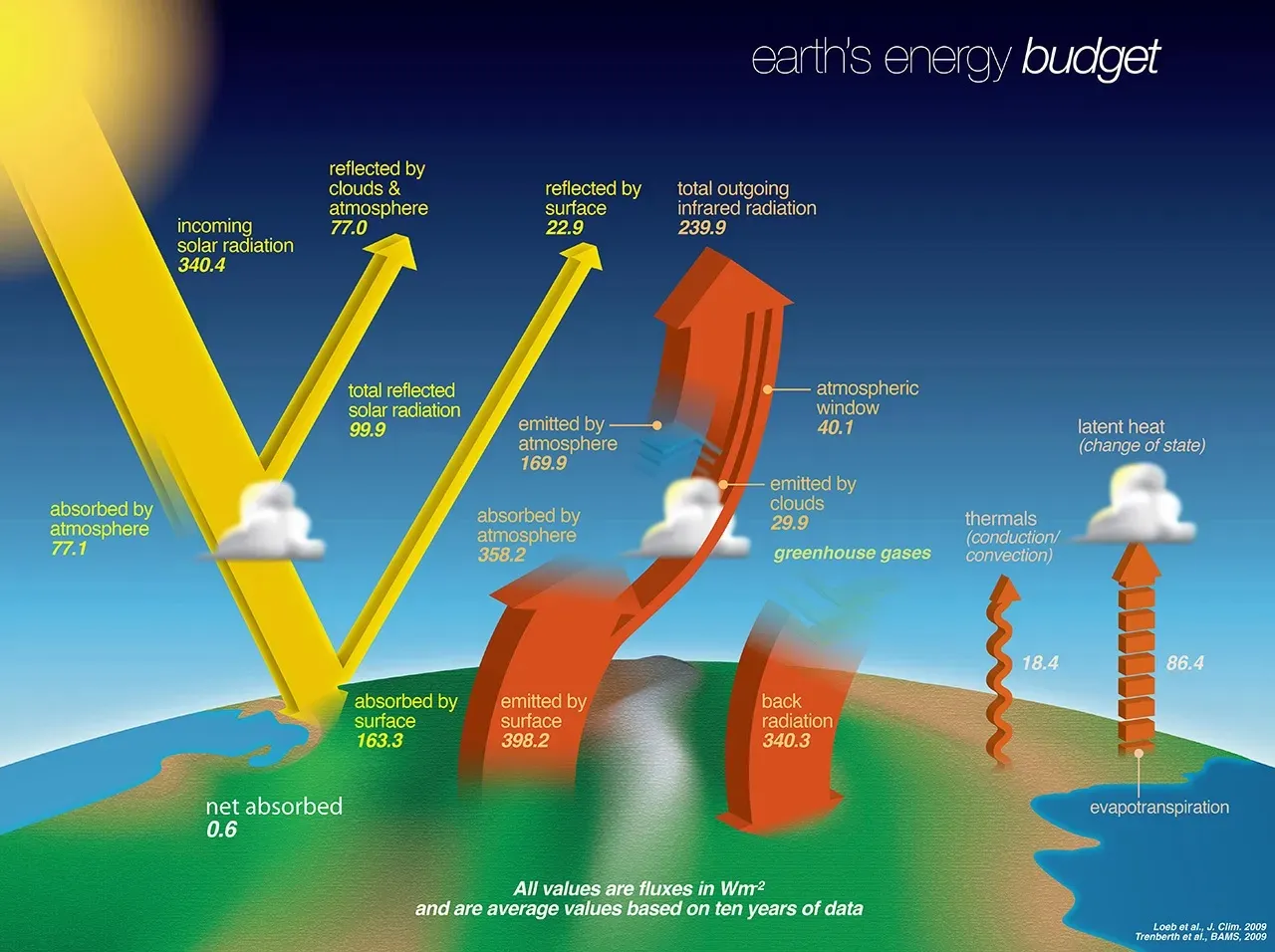
A confederation of experts considers the latest science on the workings of boundary layer processes
“All humans live there,” says University of Washington cloud physicist Rob Wood, explaining one of the main reasons scientists study the atmospheric boundary layer (ABL).
There are other reasons. The ABL, for instance, is where all weather happens.
It is also the portion of the atmosphere closest to the Earth’s surface. The exchange of heat, moisture, mass, and momentum in the ABL makes it the engine room of Earth’s water cycle, on which all planetary life depends.
The ABL “is in direct contact with the surface,” says Wood, and is heavily influenced by the surface over a longer time scale than are the upper regions of the atmosphere, where clouds form and precipitation initiates.
Wood co-chairs the Warm Boundary Layer Processes working group of the Atmospheric System Research (ASR) program at the U.S. Department of Energy (DOE). ASR funds observational research whose data go on to inform and improve predictive models of the atmosphere.
“It is important to think about how these processes collectively determine the energy flow in our Earth system.”
– Christine Chiu
The group’s other co-chair is Colorado State University research scientist Christine Chiu, an expert on how clouds, precipitation, radiation, and aerosols interact.
Aerosols are the atmospheric particles that water condenses upon to form cloud droplets.
“Clouds respond to aerosol changes in many ways,” says Chiu, resulting in different precipitation characteristics and differences in cloud albedo. This measure of how much clouds reflect light impacts the Earth’s energy budget.
One Among Four
ASR sponsors three other working groups to encourage collaborative process-level research on aerosols, convection, and the Earth’s high latitudes.
Chiu and Wood coordinate the ASR working group devoted to processes in the warm boundary layer. This group focuses on the ABL in the tropics and midlatitudes, where clouds are dominated by liquid water instead of ice.
The areas of interest of the four working groups are separate, says Wood, though many scientists belong to more than one group.
“If we think about convection, shallow or deep, it starts from boundary layer processes,” says Chiu, pointing to storm activity as one among many ways that interests among all the ASR working groups cross over.

The warm boundary layer processes group is also the largest working group at ASR, she adds──a further sign that the ABL is a shared interest among atmospheric scientists.
As with any ASR working group, “membership” is a loose term, and depends any year on those who join with a warm boundary layer process in mind.
“The group kind of moves around,” says Wood, depending on where the latest science concerns lead.
To join the working group, create an account with ARM. Then, under “Subscriptions,” check “Warm Boundary Layer Processes.”
Lower Down, Higher Complexity
In the Earth-hugging ABL, atmospheric scientists must consider more than physics, which dominates studies of higher regions of the troposphere. About two additional miles extend above the ABL to the bordering stratosphere.
In the ABL, so many complex small-scale processes come into play, says Wood, that scientists have difficulty understanding the interacting processes.
One is evapotranspiration, the process of liquid water transforming into water vapor as it rises into the air. Understanding a land-atmosphere interaction like this requires mixing physics with “things like biology,” says Wood, since much of the evaporating water emits from plant matter.
To address the complexity of warm boundary layer issues, the group will begin holding bimonthly virtual meetings in January 2025.
Research Highlights

Chiu and Wood illustrate the growing complexity of warm boundary layer issues by naming a few recent papers submitted to ASR’s Research Highlights page. (Scientists with ASR-funded projects underway are encouraged to write these brief, understandable summaries of their work.)
They point to one paper that shows how machine learning neural networks can help simulate near-surface turbulence.
Chiu and Wood also name a study that uses conventional weather data as the basis for a deep neural network that estimates boundary layer height. That’s an important variable in the development of turbulence, which controls the transport of heat, moisture, and mass into the atmosphere.
Another study looks at “locally narrow” droplet size distributions in stratocumulus clouds, a nonuniform variability that models should reflect. Data were derived from a unique holographic instrument flown on a field campaign in the Azores funded by Atmospheric Radiation Measurement (ARM).
The DOE user facility operates six atmospheric observatories in climate-critical regions across the world, including its Eastern North Atlantic (ENA) site just west of Portugal. ARM is frequently a rich data source for ASR work on the warm boundary layer.
A Wide ‘Range of Activities’
Other 2024 papers assess warm cloud albedo (reflectivity), discuss the role of aerosol size on computer-simulated cloud transitions from overcast to broken conditions near ENA, and track shallow cumulus cloud behavior at ARM’s Southern Great Plains observatory by modeling the effects neighboring clouds have on growth and dissipation. (For one, it seems that a growing cloud displays higher vertical velocity when surrounded by “decaying” clouds: those at the end of their life cycles.)
“It is important to think about how these processes collectively determine the energy flow in our Earth system,” says Chiu, mentioning another recent paper, on investigating a “more transparent infrared window” in the atmosphere. The authors use ARM long-term measurements to evaluate our knowledge of water vapor continuum absorption, an outstanding issue that matters to the Earth’s cooling.

In one window-like infrared spectral region, from 8.0 to 12.8 microns, thermal radiation from the Earth’s surface passes almost unimpeded through the atmosphere, a “transparency” that has a planetary cooling effect. Using ARM data, the authors found an increase in this atmospheric transparency, and therefore an enhanced cooling effect.
Papers like these, says Wood, illustrate the working group’s “range of activities and foci.”
Yearly Breakout Sessions
Like the other ASR working groups, the warm boundary layer group has both a science and communications mission. Throughout the year, Chiu and Wood inform DOE program managers and principal investigators about emerging issues and concerns.
The primary way of communicating these issues is through a working group breakout session on warm boundary layer processes at the annual Joint ARM User Facility/ASR Principal Investigators (PI) Meeting. (The next is scheduled for March 3 to 6, 2025, in Rockville, Maryland.)
At the last such meeting, in August 2023, Chiu and Wood moderated a session with Yunyan Zhang, a former co-chair of the working group and a cloud life cycle researcher at Lawrence Livermore National Laboratory in California.
There were 15 talks, divided into the group’s traditional three main topic areas: boundary layer structure and interactions with land surface; aerosol-cloud interactions; and cloud dynamics and microphysics.
The quick presentations, backed with a slide or two, ranged from glimpses at the evolution of shallow cumulus clouds and moist downdrafts to biomass-burning aerosols and sea salt delivery to clouds.
“People can see what other people are doing,” says Wood.
Adds Chiu: “Through this kind of opportunity, we hope to promote the visibility of early-career scientists and to build a strongly connected and collaborative working group.”
The session’s key findings were published later in a 2023 breakout summary report.
Coming: Reports in Recent Research
The agenda for the 2025 breakout session is still being hammered out. Monthly planning meetings just started in November 2024.

Among other things, Chiu and Wood say they will decide which posters will be elevated to talks. Next will be soliciting presentations.
Following tradition, there will be updates from experts on ARM’s value-added products (VAPs), in which data are streamlined for easier use in models.
And, as always, there will be reports on recent or upcoming ARM field campaigns that have (or will) supply data relevant to warm boundary layer processes.
Likely entrants, says Chiu and Wood, include an update on the Bankhead National Forest (BNF) observatory in northern Alabama, where data collection started in October 2024.
BNF “obviously projects into more than one (ASR) working group,” says Wood. “There is considerable land-atmosphere exchange. There’s also deep convection evolving from shallow convection over the diurnal cycle──another boundary layer-related problem.”
Whatever the final agenda is, say Chiu and Wood, the main order of business, as always, will be to present new research and establish new collaborations. That’s the shared mission of every ASR working group.
Wood belongs to all of them.
“I like to see what they’re up to,” he says.
# # #
Author: Corydon Ireland, Staff Writer, Pacific Northwest National Laboratory
This work was supported by the U.S. Department of Energy’s Office of Science, through the Biological and Environmental Research program as part of the Atmospheric System Research program.

